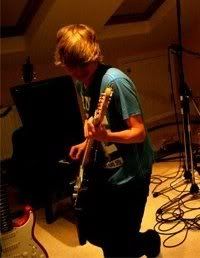1. Who did you work with and how did you manage the task between you?
My group consisted of me, Dominic, Sheera and India. Initially in class we broke up the tasks between ourselves. Me and Dominic chose to act and India and Sheera split the filming between themselves. Since me and Dominic were acting we handled the script and the shot list/shooting schedule and India and Sheera handled the storyboard. We tried to split the tasks as evenly as possible to ensure the task was a learning experience for everyone in the group. I even managed to shoot a shot myself when i didnt have to be acting in it. At the end we split the editing evenly so again everyone gained experience from creating this continuity sequence.
2.How did you plan your sequence? What processess did you use? What theories did you take into account?
To plan the sequence we had two group meetings. The first of these was in a lesson in which we mostly disucussed everything involving roles and an theme for the sequence. Once this had been decided we started drawing up a story board. We did some run throughs beforehand to check all the camera framings and angles would work in our location of chpice. In the second meeting at lunch we finished off the story board and made our shot list/shooting schedule so we knew exactly which shots we were taking where. This made it much easier when it came to the filming of the sequence. In order to create this continuity sequence we took many rules and theories into account. As stated in the brief we had to demonstrate match-on-action, shot-reverse shot and the 180degree rule. This was all put into the sequence in order to create a sense of flow. There were other rules and techniques we used to ensure our sequence worked well such as very quick gapless editing and we made sure we didnt break the 30degree rule so it looked as if there were no short 'jumpy' cuts. A master shot was also used in the sequence so the audience know where the continuity sequence takes place and it helps re-establish taht throughout the sequence when it cuts back to it later on.
3. What technology did you use to complete the task, and how did you use it?
We had to use many pieces of equipment in order to create this continuity sequence. The first was a Canon Mini DV video camera. This was our main piece of equipment and was used to film every shot. This was operated by the cameraman/woman and was mounted on a tripod for every shot to ensure smooth non-shaky shots. To accompany this and record auido we used a shotgun microphone and headphones to try and get a reasonably good quality dialouge to accompany the shots. To capture and edit the sequence we used Adobe Premier Pro. We only usd the very basics of this program but it was enough to edit our sequence. We also used it to create titles for the begining of the sequence.
4. What factors did you have to take into account when planning, shooting and editing?
We had to take into account many factors when planning and shooting our sequence. The first obstacle to overcome was managing to create this sequence within the time limit we were given. We had an hour to plan, an hour to shoot and an hour to edit. This obviously restricted the complexity of the sequence so we decided to make it short and simple. The second thing we had to consider was the location of our shoot. This area had to have reasonable lighting since we decided not to use artificial lights, it had to have quite quiet sound levels so there would be no background noise when recording our audio and the location had to be accessible to us during school hours. From this we decided to use our media classroom. It was empty at the planned time of shooting and would have enough lighting due to there being many windows. While shooting our time limit was the main factor we considered. We had to limit the number of takes we could do of each shot in order to finish within the time limit. This meant we wouldnt be able to perfect all our shots but we did manage to correct the ones that went horribly wrong. Another thing to consider however was the continuity rules. We had to stick mainly to the 180degree rule while shooting to make our sequence look as proffessional as possible. When editing we had to try and split the task evenly between us. This meant constantly switching between tasks and perhaps slowed the editing process down slightly. Again we had to consider continuity techniques and try and make our cuts as tight as possible. With only an hour to edit everything had to be done in a brisk manner and this limited our ability to perhaps create perfect match-on-action between each cut.
Group 1D
